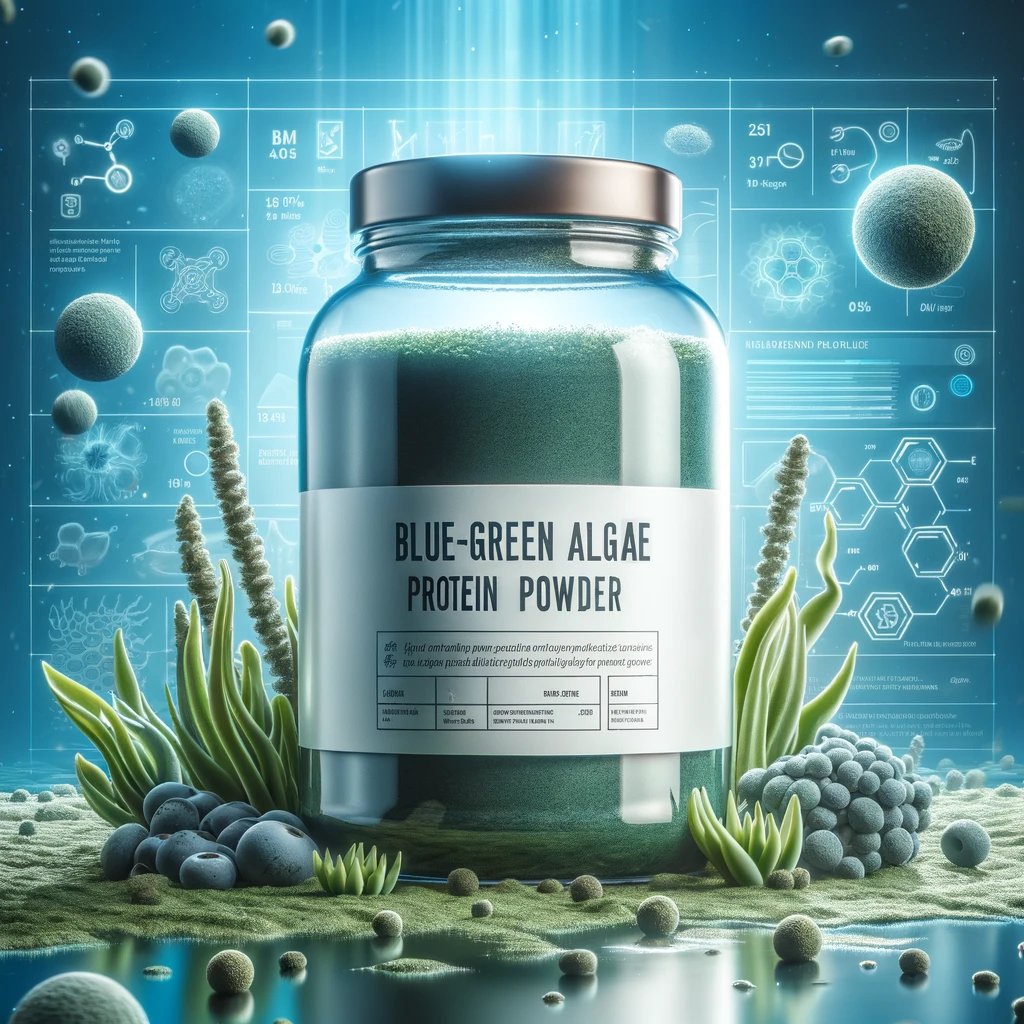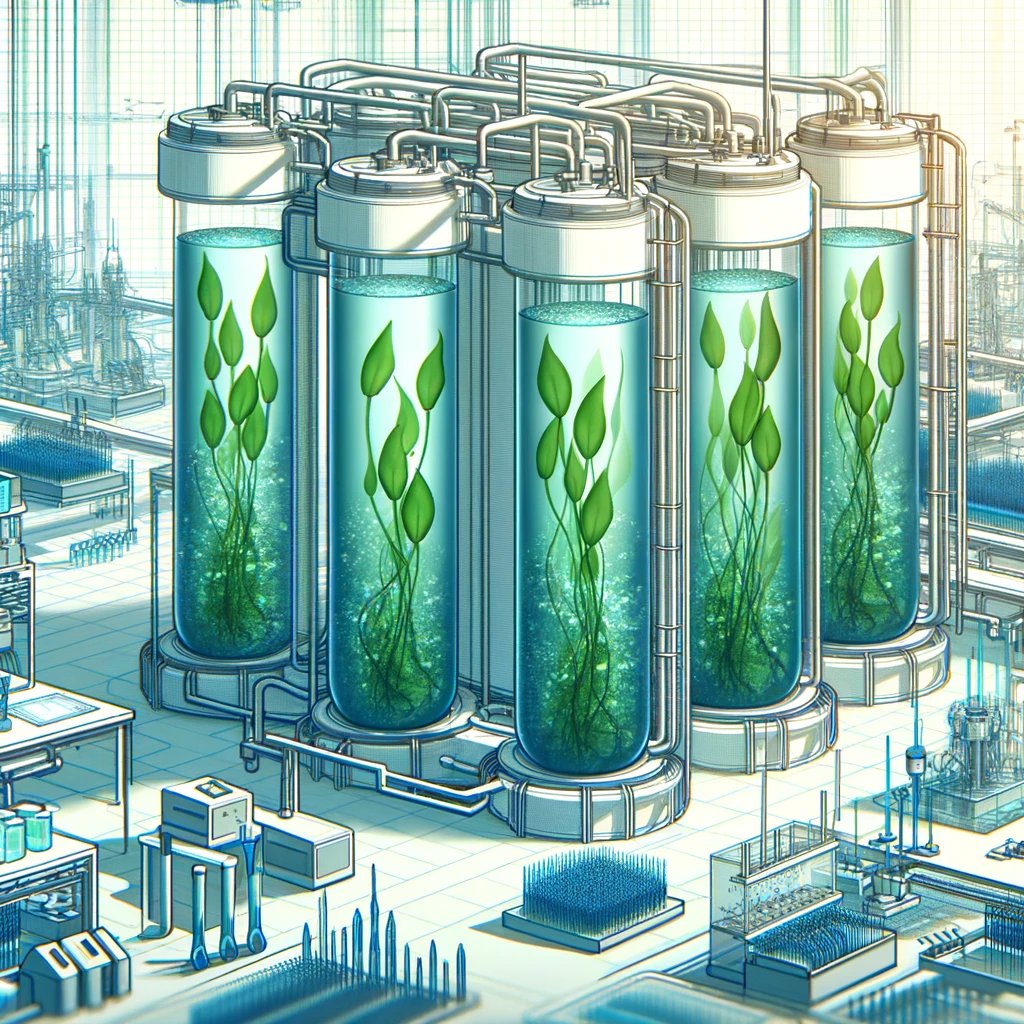
The Rise of Blue-Green Algae Proteins
SUBSCRIBE TO OUR BLOG
Promotions, new products, and recipes.
Blue-green algae, also known as cyanobacteria, have been gaining significant attention in various industries due to their rich protein content and potential applications. From the food industry to pharmaceuticals, these proteins are proving to be versatile and valuable. Let's delve deeper into the rise of blue-green algae proteins and their growing significance in different sectors.
Blue-green algae, or cyanobacteria, are primitive organisms that thrive in diverse aquatic environments. Despite their simple structure, they possess remarkable properties, including the ability to synthesize proteins with high nutritional value and unique functionalities. The growing demand for sustainable protein sources has led to increased interest in exploring the potential of blue-green algae proteins.
Take Aways
- Blue-green algae proteins offer a sustainable and eco-friendly alternative to traditional protein sources, contributing to environmental conservation efforts.
- These proteins are rich in essential amino acids, vitamins, and bioactive compounds, providing numerous health benefits such as immune support, muscle recovery, and skin rejuvenation.
- The versatility of blue-green algae proteins allows for their incorporation into various industries, including food, cosmetics, pharmaceuticals, and biotechnology.
- Cultivating blue-green algae for protein production requires fewer resources and has a lower environmental footprint compared to conventional agriculture and livestock farming.
- Ongoing research and technological advancements continue to unlock the full potential of blue-green algae proteins, paving the way for innovative applications and solutions to global challenges.
- While generally safe for consumption and topical use, it's essential to source blue-green algae proteins from reputable suppliers and follow recommended guidelines to ensure safety and efficacy.
Understanding Blue-Green Algae
What are Blue-Green Algae?
Blue-green algae are a group of photosynthetic bacteria that can be found in freshwater and marine habitats. They play a crucial role in the ecosystem by producing oxygen and serving as a primary food source for aquatic organisms.
Role of Blue-Green Algae in the Ecosystem
Blue-green algae contribute to the balance of aquatic ecosystems by participating in nutrient cycling and providing essential nutrients for other organisms. They form the base of the food chain, supporting the survival of various aquatic species.
Unlock the secrets of modernist cuisine. Explore our range of hydrocolloids and kitchen tools today. Visit our product page and shop now!
Proteins Found in Blue-Green Algae
Blue-green algae produce a wide range of proteins, including essential amino acids, enzymes, and bioactive peptides. These proteins exhibit diverse functionalities and have been studied for their potential health benefits.
Types of Proteins Present in Blue-Green Algae
The proteins synthesized by blue-green algae vary in structure and function, ranging from structural components to enzymes involved in metabolic processes. Some notable proteins include phycocyanin, allophycocyanin, and C-phycocyanin, which contribute to the distinctive color of blue-green algae.
Benefits of Blue-Green Algae Proteins
Blue-green algae proteins are rich in essential amino acids, vitamins, and minerals, making them a valuable nutritional source. They also possess antioxidant and anti-inflammatory properties, which have been linked to various health benefits, including immune support and cell repair.
Applications in Food Industry
The unique nutritional profile of blue-green algae proteins has led to their incorporation into a wide range of food products. They are used as functional ingredients in beverages, snacks, and supplements, providing a sustainable alternative to traditional protein sources.
Use of Blue-Green Algae Proteins in Food Products
Blue-green algae proteins are prized for their high digestibility and amino acid profile, making them suitable for fortifying foods with protein. They are commonly used in plant-based products to enhance texture, flavor, and nutritional content.
Nutritional Value and Health Benefits
Consumption of blue-green algae proteins has been associated with various health benefits, including improved muscle recovery, enhanced energy levels, and support for cardiovascular health. Their bioactive compounds also exhibit antioxidant properties, protecting cells from oxidative damage.
Cosmetic Industry Utilization
In addition to the food industry, blue-green algae proteins have found applications in the cosmetic industry for their skincare benefits. They are valued for their moisturizing, anti-aging, and skin-repairing properties, making them popular ingredients in skincare formulations.
Incorporation of Blue-Green Algae Proteins in Skincare Products
Blue-green algae proteins are incorporated into creams, serums, and masks to hydrate the skin, reduce inflammation, and promote collagen production. Their ability to penetrate the skin barrier makes them effective in addressing various skin concerns, such as dryness, wrinkles, and blemishes.
Skin Benefits and Effectiveness
Studies have shown that topical application of blue-green algae proteins can improve skin hydration, elasticity, and overall complexion. Their antioxidant properties help combat free radicals and environmental stressors, leading to healthier and more radiant-looking skin.
Pharmaceutical Applications
The therapeutic potential of blue-green algae proteins has attracted attention in the pharmaceutical industry, with ongoing research exploring their medical applications. These proteins exhibit promising properties for drug delivery, disease treatment, and tissue regeneration.
Medical Applications of Blue-Green Algae Proteins
Blue-green algae proteins have been investigated for their antimicrobial, antiviral, and anticancer properties, demonstrating potential as novel therapeutics. They are also being studied for their ability to modulate immune responses and promote wound healing.
Research and Development in Pharmaceuticals
Advancements in biotechnology have enabled the production of recombinant blue-green algae proteins with enhanced bioactivity and stability. These proteins hold promise for the development of new drugs targeting various diseases, including cancer, infectious diseases, and inflammatory conditions.

Environmental Impact
The cultivation of blue-green algae for protein production offers environmental benefits compared to traditional livestock farming and crop cultivation. Algae cultivation requires less land, water, and resources, making it a sustainable alternative with lower carbon emissions and environmental footprint.
Sustainable Aspects of Blue-Green Algae Protein Production
Blue-green algae can be cultivated using photobioreactors or open ponds, utilizing sunlight and carbon dioxide for photosynthesis. They can thrive in various environmental conditions, including saline water and wastewater, reducing the competition for arable land and freshwater resources.
Eco-Friendly Alternatives to Traditional Protein Sources
The increasing demand for protein sources has put pressure on conventional agriculture and livestock production, leading to deforestation, habitat destruction, and water pollution. Blue-green algae offer a sustainable alternative that can alleviate environmental pressures and contribute to global food security.
Challenges and Future Prospects
Despite the promising potential of blue-green algae proteins, several challenges need to be addressed to fully realize their benefits. These include optimizing cultivation techniques, scaling up production, ensuring product safety, and addressing regulatory hurdles.

Limitations Faced in Utilizing Blue-Green Algae Proteins
Challenges such as contamination, variability in protein content, and high production costs pose obstacles to the widespread adoption of blue-green algae proteins. Research efforts are underway to overcome these limitations and unlock the full potential of this valuable resource.
Potential Advancements and Future Outlook
With ongoing advancements in biotechnology and sustainable agriculture, the future looks promising for blue-green algae proteins.
Conclusion
In conclusion, the rise of blue-green algae proteins represents a significant advancement in the fields of nutrition, cosmetics, pharmaceuticals, and environmental sustainability. These proteins, derived from cyanobacteria, offer a rich source of essential amino acids, vitamins, and bioactive compounds with diverse functionalities. From enhancing the nutritional profile of food products to providing skincare benefits and potential medical applications, blue-green algae proteins have garnered attention for their versatility and efficacy.
Furthermore, the cultivation of blue-green algae for protein production presents an eco-friendly alternative to traditional livestock farming and crop cultivation, contributing to environmental conservation and sustainability efforts. Despite challenges such as production scalability and regulatory considerations, ongoing research and technological innovations continue to pave the way for broader adoption and utilization of blue-green algae proteins.
As the demand for sustainable protein sources grows and the understanding of cyanobacteria's potential expands, blue-green algae proteins are poised to play a pivotal role in addressing global challenges related to food security, health, and environmental sustainability.
FAQs (Frequently Asked Questions)
1. Are blue-green algae proteins safe for consumption?
Yes, blue-green algae proteins are generally considered safe for consumption when sourced from reputable suppliers and used in accordance with recommended guidelines. However, individuals with specific health conditions or allergies should consult with a healthcare professional before incorporating them into their diet.
2. Can blue-green algae proteins be used in vegan and vegetarian diets?
Yes, blue-green algae proteins are suitable for vegan and vegetarian diets as they are derived from plant-like organisms (cyanobacteria) and do not involve animal products.
3. Do blue-green algae proteins have any side effects?
While blue-green algae proteins are generally well-tolerated, some individuals may experience mild gastrointestinal discomfort or allergic reactions. It's essential to start with small doses and monitor for any adverse effects.
4. What are the environmental benefits of cultivating blue-green algae?
Cultivating blue-green algae requires fewer resources compared to traditional agriculture and livestock farming, leading to reduced land use, water consumption, and greenhouse gas emissions. Additionally, blue-green algae cultivation can help mitigate nutrient pollution in water bodies by utilizing excess nutrients.
5. How can I incorporate blue-green algae proteins into my skincare routine?
Blue-green algae proteins can be found in various skincare products, including creams, serums, and masks. Look for products that list blue-green algae extract or phycocyanin as ingredients and follow the recommended usage instructions for optimal results.
Sources:
- "Blue-green Algae: Properties, Uses and Health Benefits" - Source
- "Cyanobacteria and Their Toxins: The Risks and the Remedies" - Source
- "Potential Applications of Cyanobacteria and Their Metabolites: A Review" - Source
Well That's the Story. I hope it was helpful. Let's Hear Your Thoughts!
We've shared our insights, and now it's your turn! Have an opinion, a question, or a story to share about this article? Dive into the comments below and join the conversation. Your voice is a crucial part of this community, and we're eager to hear what you have to say.
Thought that was fascinating? Here’s another story you might like:
See: The Hydrocolloid Glossary
For further reading:
AI and Food Imagery - A Taste of the Future
Every dish deserves the perfect texture to complement its flavors. Why settle for anything less than perfection? With Cape Crystal Brands Food Texture products, you don't have to. Whether you're crafting velvety sauces, glistening gels, or fluffy mousses, our range ensures you get the consistency you desire every single time.
Don't just cook—create masterpieces. Dive into the world of culinary textures and elevate every meal. Shop now and experience the magic of Cape Crystal!
🛍️ Click Here to Explore Cape Crystal Brands Food Texture Products!

Chef Edmund
Edmund McCormick is the founder of Cape Crystal Brands and EnvironMolds LLC. He is the author of several non-fiction “How-to” books, past publisher of the ArtMolds Journal Magazine, editor of Beginner's Guide to Hydrocolloids, and author of six eBook recipe books available for download on this site. He resides in Far Hill, NJ and lives and breathes his food blogs as both writer and editor. You can follow him on Twitter and Linkedin.

|
About the Author Ed is the founder of Cape Crystal Brands, editor of the Beginner’s Guide to Hydrocolloids, and a passionate advocate for making food science accessible to all. Discover premium ingredients, expert resources, and free formulation tools at capecrystalbrands.com/tools. — Ed |
Related Posts

Buy Sunflower Lecithin Powder for Cooking and Baking?

A Comprehensive Comparison of Xanthan Gum and Guar Gum

Reverse Specification Instructions
- Choosing a selection results in a full page refresh.
POLICY PAGES
QUICK LINKS
CONTACT INFORMATION
Cape Crystal Brands, 18 Bank St., Suite 1, Summit NJ 07901.
- Phone: +1 908-273-5600
- Email: info@capecrystalbrands.com
- Tax ID: 26-2477626000
- FDA Facility Registration # 16980627550
- Kosher Certified: OKosher.org
Country/region
© 2025, Cape Crystal Brands | Sitemap


